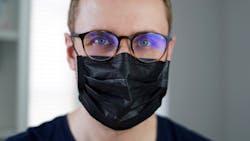Anxiety or depressive disorder symptoms, mental health care use found among adults
During August 2020 to February 2021, the percentage of adults with recent symptoms of an anxiety or a depressive disorder increased from 36.4% to 41.5%, and the percentage of those reporting an unmet mental health care need increased from 9.2% to 11.7%, addressed a Centers for Disease Control and Prevention (CDC) Morbidity and Mortality Weekly Report. Increases were largest among adults aged 18–29 years and those with less than a high school education.
Trends in mental health can be used to evaluate the impact of strategies addressing adult mental health status and care during the pandemic and to guide interventions for disproportionately affected groups.
The spread of disease and increase in deaths during large outbreaks of transmissible diseases is often associated with fear and grief. Social restrictions, limits on operating nonessential businesses, and other measures to reduce pandemic-related mortality and morbidity can lead to isolation and unemployment or underemployment, further increasing the risk for mental health problems. To rapidly monitor changes in mental health status and access to care during the COVID-19 pandemic, CDC partnered with the U.S. Census Bureau to conduct the Household Pulse Survey (HPS).
HPS data can be used in near real time to evaluate the impact of strategies that address mental health status and care of adults during the COVID-19 pandemic and to guide interventions for groups that are disproportionately affected. HPS is a rapid-response online survey using a probability-based sample design to measure the social and economic impact of the COVID-19 pandemic on U.S. households. This experimental data product was developed by the U.S. Census Bureau in partnership with CDC’s National Center for Health Statistics (NCHS) and several other federal statistical agencies. The sample is drawn from the U.S. Census Bureau’s Master Address File.
Questions on mental health symptoms were based on the validated four-item Patient Health Questionnaire (PHQ-4) for depression and anxiety and included how often, during the past seven days, respondents had been bothered by 1) feeling nervous, anxious, or on edge; 2) not being able to stop or control worrying; 3) having little interest or pleasure in doing things; and 4) feeling down, depressed, or hopeless. Adults who had symptoms that generally occurred more than one half of the days or nearly every day were classified as having symptoms, consistent with published scoring recommendations.
Questions about mental healthcare use included whether, during the past four weeks, respondents had 1) taken prescription medication for their mental health, 2) received counseling or therapy from a mental health professional, or 3) needed but did not receive counseling or therapy from a mental health professional (i.e., had an unmet mental health need).
During Aug. 19 to 31, 2020, through Dec. 9 to 21, 2020:
· significant increases were observed in the percentages of adults who reported experiencing symptoms of an anxiety disorder (from 31.4% to 36.9%), depressive disorder (from 24.5% to 30.2%), and at least one of these disorders (from 36.4% to 42.4%).
· significant increase was observed in the percentage of adults who reported taking prescription medication or receiving counseling for their mental health (from 22.4% to 25.0%).
· significant increase was observed in the percentage of adults who reported needing but not receiving counseling or therapy for their mental health (from 9.2% to 12.4%). Estimates through January 2021 were similar to those in December 2020.
During Aug. 19 to 31, 2020, through Jan. 20 to Feb. 1, 2021:
· symptoms of an anxiety or a depressive disorder increased significantly from 36.4% to 41.5%.
· significant increases were observed for all demographic subgroups presented, except adults aged ≥80 years and non-Hispanic adults reporting races other than White, Black, or Asian.
· the largest increases (8.0 and 7.8 percentage points) were among those aged 18 to 29 years and those with less than a high school education, respectively.
· mental health care treatment increased significantly from 22.4% to 24.8%.
· significant increases were observed for adults aged 18 to 29, 30 to 39, and 60 to 69 years; men and women; non-Hispanic White and non-Hispanic Black adults; adults with at least a high school education; and adults who had not experienced symptoms of an anxiety or a depressive disorder during the past seven days.
· unmet mental health needs also increased significantly from 9.2% to 11.7%.
· subgroups with significant increases included adults aged 18 to 29, 30 to 39, and 50 to 59 years; men and women; Hispanic, non-Hispanic White, and non-Hispanic Black adults; adults at all education levels; and adults regardless of whether they experienced symptoms of an anxiety or a depressive disorder or both during the past seven days.
· the largest increases in unmet mental health needs (7.2 percentage points and 4.3 percentage points) were among adults aged 18–29 years and those with less than a high school education, respectively.
During January 20, 2021–February 1, 2021, 23.8% of persons with symptoms of an anxiety or a depressive disorder had unmet mental health needs, and this percentage increased by 2.8 percentage points from August 2020 to February 2021.
